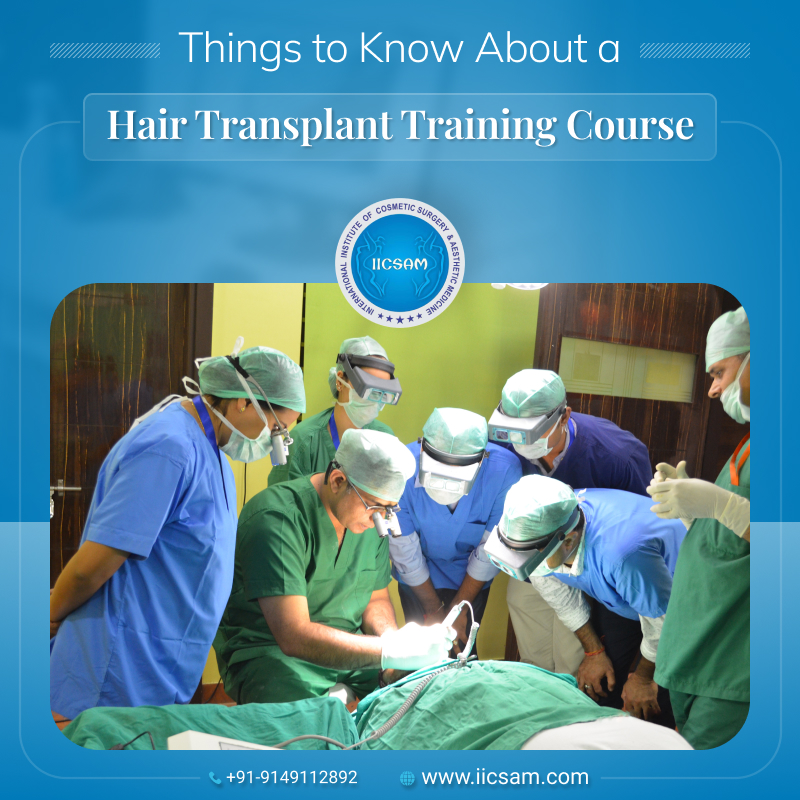Hair transplants are one of the most widely in demand cosmetic procedures. It provides a permanent solution to hair loss problems by restoring the natural hairline of the patient. It is safe, painless, and delivers successful results. With the demand for hair transplant specialists rising every day, there is a lack of skilled and trained professionals in the field. The International Institute of Cosmetic Surgery & Aesthetic Medicine (IICSAM) aims to fill this void with comprehensive courses for hair transplant training in India. Our faculty comprises of internationally certified surgeons such as Dr. Satya Saraswat and Dr. Preeti Saraswat.
At IICSAM, participants can enrol for a Hands-on Certificate Training Course in both FUE and FUT Hair Transplant techniques. It is a 3-month long course that includes 3 days of practical training with real patients. The hair transplant course eligibility allows any person with an MBBS degree or above to sign up for this course.
Below, we take a closer look at what’s included in a hair transplant training course.
Hair transplant is an advanced treatment for hair loss. Through this procedure, hair follicles are removed the safe donor area of the scalp and implanted into the recipient area or the balding sections. The surgery is performed under the effects of local anaesthesia.
Hair transplants are performed in two techniques – FUE and FUT.
Follicular Unit Extraction, or FUE, is the more popular method of hair transplantation. A round punch excision device is used to extract the individual hair follicles directly from the scalp. They are then inserted to the recipient area using a specialised device, which makes the process faster and causes minimal scarring.
Follicular Unit Transplantation, or FUT, is the traditional way of doing a hair transplant. A strip of scalp, containing healthy hair follicles, is surgically removed from the donor area. The hair strip is then sliced and put under a microscope to extract individual follicular units. Hair grafts are made and then inserted into the balding area. this method causes a long linear scar on the scalp and has a longer recovery period.
When looking for a hair transplant training course, it is important to take a look at the topics being covered in the curriculum. A course for hair transplant training in India should ideally include hair loss treatments for male pattern and female pattern baldness, FUE and FUT hair transplant techniques, hairline design, graft preparation and handling, extraction and insertion of hair grafts, and scalp micropigmentation.
The hair transplant course at IICSAM covers the following:
There is also 3 days of hands-on training wherein participants can learn from live case observation.
IICSAM is the premier training institute for all types of cosmetic procedures and aesthetic treatments. The teaching faculty comprises of experienced hair transplant surgeons, including names like Dr. Satya Saraswat and Dr. Preeti Saraswat. Both are Diplomates from the American Board of Hair Restoration Surgery (ABHRS) and are adept in all types of hair restoration treatments.
To know about the hair transplant course eligibility and other details, dial +91-9149112892 or send an email to iicsamagra@gmail.com.
Also Read: Transform Appearances by Undertaking Hair Transplant Training
